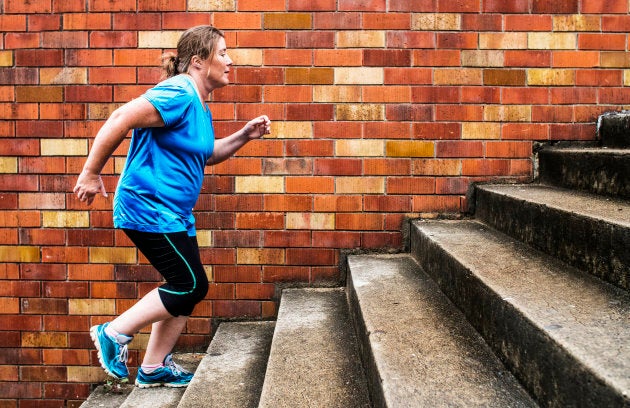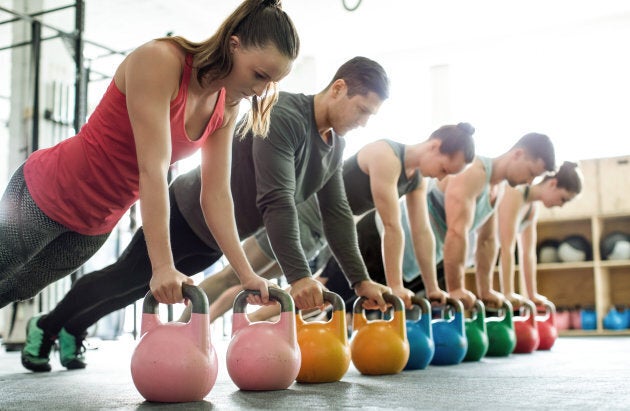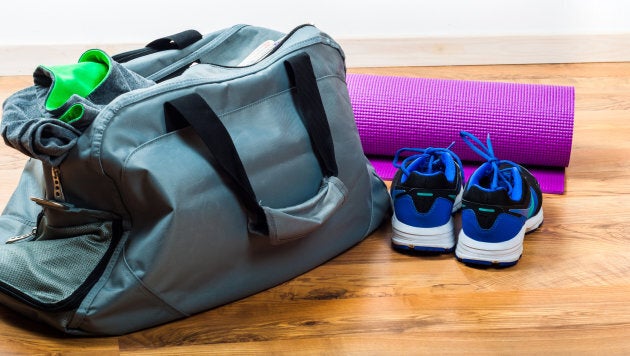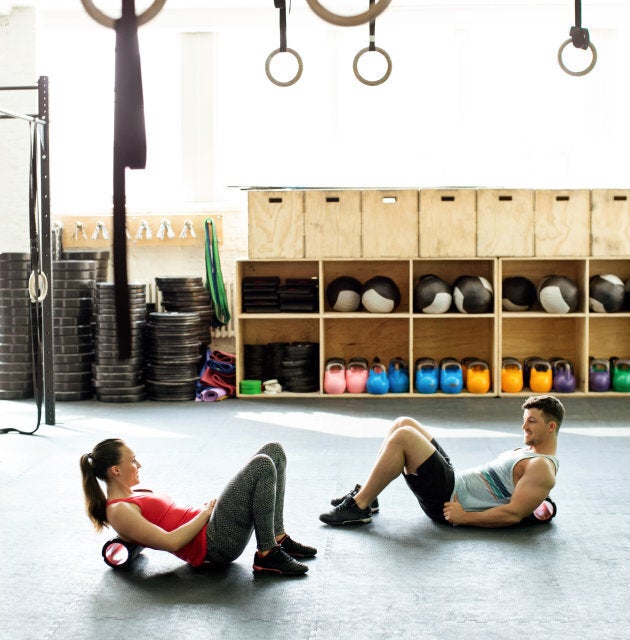Running season is upon us, with Sydney's City 2 Surf and Blackmores Running Festival coming up. Run Melbourne also takes place at the end of July, not to mention a slew of other runs around the country dotted throughout the calendar.
Some of you might be seasoned runners already, in which case you'll already be in training mode, but would-be runners needn't shy away from the task -- it's not as scary as it seems. You've just got to get started.
Ben Lucas is a former NRL player turned ultra endurance runner. In the space of five years he completed 35 marathons and five ultra marathons. In 2013 he took on the challenge to train up 101 non-runners to run their first marathon, with great success. Lucas is also the founder of the Sofa2Surf concept which is currently operating out of his studio, Flow Athletic. It's safe to say he knows a fair bit about running.
"For starters, when it comes to doing your run-specific training, you should be aware that there are a number of different types of training that you should incorporate into your program," Lucas told HuffPost Australia.

It pays to get to know the terrain of your run prior to race day.
"With runs like Sydney's City 2 Surf, you should be doing a hill sprint day within your training program, because the run is a little hilly, not to mention it famously has 'Heartbreak Hill'."
"You should also do a sprint training, or 'Fartkek' training day. Fartlek is also known as 'speed play', as you want to be able to do quick sprints to get around people, or even at the end if you have enough energy," Lucas said.
Lastly, with regards to running, endurance is obviously important.
"You should also do a long run day each week. If you are new to running, start with around 5km on your long run day and then build up from there. It doesn't need to be fast, with this you are just aiming to build up your kilometers."
Don't neglect strength training
"Getting away from running, strength training is very good for runners because you want to build your strength in your glutes and hamstrings, especially and they do a lot of work when running long distances," Lucas said.
"You also want to work on your core and back, as having good strong posture is important when running long distances. Hunching over will get uncomfortable very quickly if your upper body and core is weak, plus it may lead to you pulling muscles or creating imbalances."

Lucas emphasises that weight-bearing exercises are also important for strengthening your ligaments and joints, such as ankle and knee joints.
Yoga can work wonders
"Believe it or not, yoga has become the norm for athletes to incorporate it into their training schedules, especially for recovery," Lucas said.
"Yoga improves athletic performance. A number of years ago I decided to set myself a challenge of running 35 marathons and ultras in five years. In order to achieve this goal I had to run for many kilometres almost everyday which inevitably led to sore joints and tight muscles. A friend suggested that I start doing yoga to balance out the running and run-specific strength training that I was doing. I gave it a go. My recovery improved and so did my performance."
Lucas says that yoga helps you build your strength, as you learn to hold poses for quite a while as well as constantly flowing into the next movement. It is also great for balance, flexibility, mobility and mental endurance, all of which are needed if you were to be participating in any endurance event.

"There are lots of professional athletes that consider yoga to be a very important part of their training schedule. If it is good enough for them, it is good enough for you. There's no denying that many people -- particularly those who are desk-bound or as we age -- suffer from injuries due to stiffness and poor range of motion. This is because in both cases our muscles and connective tissue become tight and restrictive, which can result in limb and joint pain."
"While strength training is important for everyone, if you don't balance it out, you do risk struggling with the above. By practicing yoga on a regular basis, you can improve your flexibility and reduce the risk to a great extent," Lucas said.
According to a study by the American Council on Exercise, regular practice of Hatha yoga significantly improved the subject's flexibility, muscular strength, endurance and balance. After eight weeks, the group improved their flexibility by 13 percent to 35 percent.
Lucas suggests engaging in one to two yoga sessions a week.
Next, it's important to prepare for your upcoming run the week prior.
Lucas' top tips to prepare during the lead up:
Break in your gear.
"If you have purchased new shoes or clothes, wear them in the week or two leading to race day to avoid blisters and chafing on the day," Lucas said.
Pack your bag.
"Do this in advance so you have everything you need on the day. Also lay out your clothes, shoes, hat and sunscreen -- anything that you need for the morning of, because it's an early start and you don't want to forget anything."

Don't alter your diet.
"If you are planning on changing your diet or supplements, practice eating those foods and ingredients in advance. Changing your diet the night before may lead to an upset stomach on the morning of," Lucas said.
Take it easy.
"The week before, taper off your training. You don't need to run 10kms the day before the race. Do more rest and recovery in the week leading to the race so you are not too sore to perform."
How to recover
Recovery is not an optional extra -- it's the key to avoiding injury and getting back in the game faster.
Lucas' favourite recovery methods:
Use a roller.
"Go for one with a bigger surface area than a massage ball so it is good for rolling out your calves, quads, hamstrings, glutes and the bigger muscle groups in general," Lucas said.

Do yoga.
"For the same reasons as above."
Take care with your diet.
"Whether your goal is to lose weight, put on weight, fuel for an event or other, remember that nutrition is almost as important as training when it comes recovery and giving your body the nutrients that it needs is imperative. Even if your goal is to lose weight, if you don't eat enough of the right foods, you may find that your body holds onto everything you eat and stores it as fat as a result."
"Make sure that you are eating a lot of antioxidant rich foods such as bright coloured fruit and vegetables, berries and even spices such as turmeric because it is anti-inflammatory. Also protein is a must and make sure you are eating carbs. You don't need to be eating white starchy carbs, but quinoa, sweet potato and pumpkin are good examples of carbs to include in your diet," Lucas said.
Take supplements.
"It's good to supplement with magnesium if you train a lot as it can get sweated out when you exercise. I also swear by BCAA and protein powder. I'm currently liking the Lean 5 by Body Science as it also has DigeZyme which helps your body absorb protein, carbs, fats, cellulose and lactose."
Visit a float tank.
"I'm obsessed with Forever Floating in Paddington, Sydney. In fact I'm there most weeks, especially when I am training hard for a big event. Float tanks provide a great way to relax, restore and balance your mind and body. The water is heated to the temperature of your skin and contains 40 percent Epson salt (magnesium sulfate), which helps to orchestrate many bodily functions, from muscle wellness to energy production as well as the elimination of harmful toxins. Floating also allows you to neutralise gravity so as your joints and nervous system are relieved of the pressure of gravity, your body can use that extra energy towards recovery," Lucas said.
ALSO ON HUFFPOST AUSTRALIA
Click below to subscribe to the Refresh podcast by HuffPost Australia on iTunes.
